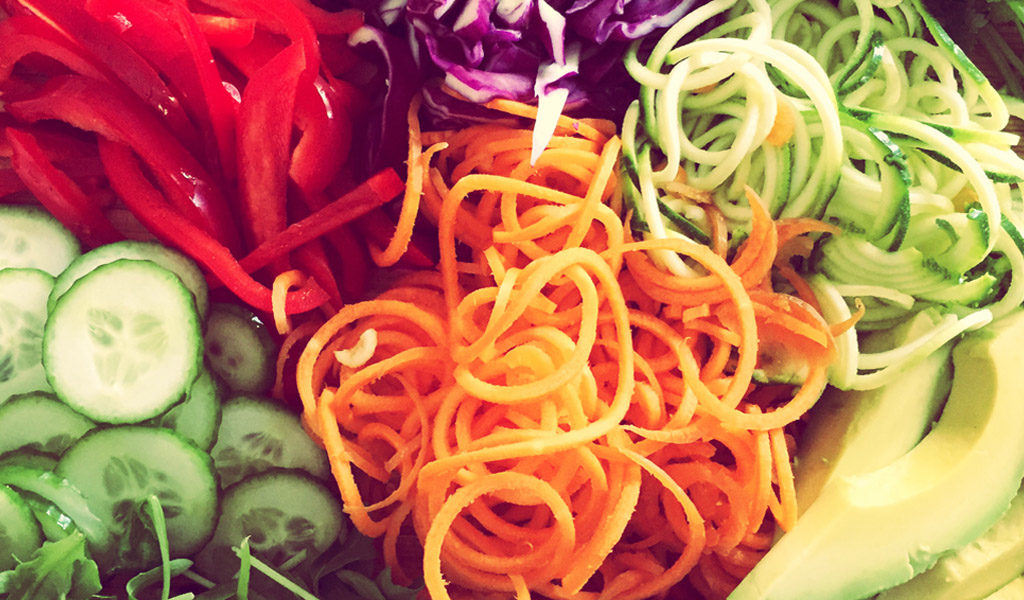If I were to give one tip to anyone and everyone, it’s to eat a variety of colourful fruits and vegetables. Every day.
Vitamins and minerals in fruits and vegetables are pretty well known, but have you heard of phytonutrients? These are natural plant chemicals which give plants their vibrant colours …and it’s not just for looks.
Nutrition Australia has a great summary of all the rainbow colours and what they do for us.
RED
Red fruits and vegetables are coloured by a natural plant pigment called lycopene. Lycopene is a powerful antioxidant that can help reduce the risk of cancer and keep our heart healthy.
ORANGE / YELLOW
Carotenoids give this group their vibrant colour. A well-known carotenoid called Betacarotene is found in sweet potatoes, pumpkins and carrots. It is converted to vitamin A, which helps maintain healthy mucous membranes and healthy eyes. Another carotenoid called lutein is stored in the eye and has been found to prevent cataracts and age-related macular degeneration, which can lead to blindness.
GREEN
Green vegetables contain a range of phytochemicals including carotenoids, indoles and saponins, all of which have anti-cancer properties. Leafy greens such as spinach and broccoli are also excellent sources of folate.
PURPLE / BLUE
The plant pigment anthocyanin is what gives blue/purple fruits and vegetables their distinctive colour. Anthocyanin also has antioxidant properties that protect cells from damage and can help reduce the risk of cancer, stroke and heart disease.

